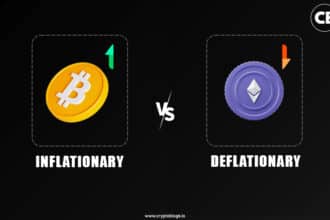In the world of finance, there is a popular saying that “markets are never saturated with good products but a bad product easily saturates them”.
Similar is the tale of the crypto industry that has evolved into a massive market with enough space for a good crypto asset to perform. Take for example meme coins- the concept has literally exploded onto crypto platforms in the past few years.
Every time a major event hits a global headline, you can easily find a new memecoin dedicated to it, launching on a network. However, there are also memeocoin like Dogecoin perform exceedingly well while there are several who fade into oblivion.
Some people don’t actually realize how widespread cryptos are and how many companies have tried to break into the space since the Bitcoin revolution. There are over 20,000 different cryptocurrencies now on the market.
Yet, the question remains: with thousands of cryptocurrencies already in existence, is there still room for new ones or have the existing cryptocurrencies already provided the functions people need?
Bitcoin Leads the Way
Invented back in 2009 and introduced anonymously, Bitcoin dominates the market even today, soaking up the lion’s share of use and attention. Behind BTC, a long list of other established coins try to bring something new and provide more relevance. However, there is a huge gap between BTC and number 2 and number 3 coins. This crowded space makes it challenging for new cryptocurrencies to carve out their own niche.
The gambling industry has played a big part in pushing Bitcoin forward. More Bitcoin transactions are said to take place in the gambling industry than in any other industry – this has helped to turn Bitcoin into a well-known currency by anyone’s standards. The widespread Bitcoin casino use is not a coincidence – it offers functionality that can provide more convenience and security. Bitcoin’s decentralized nature means no waiting for a middleman to approve the article and it also means an extra level of anonymity. Transactions also get added to public ledgers to enhance the transparency of this method.
Evolving competition among coins
Bitcoin may be huge but cryptocurrencies continue to launch almost daily including some very unusual options and meme coins that may seem confusing to outsiders and newcomers. Some of these projects aim to solve specific problems or cater to niche communities.
Others promise to be the next big thing in DeFi with flashy marketing and bold claims and have clear ambitions of getting to the same level as Bitcoin (or even more popularity). While many of these new coins will likely fade into obscurity, there’s still a chance for something fresh to break through the noise.
Bitcoin has a hold on the industry in some ways as it is much more simple to actually use on a daily basis. People are still looking to some of the newer cryptocurrencies as potential investments but for actual functionality, it is hard to compete with Bitcoin.
People can visit some big stores and online marketplaces and use Bitcoin. A huge number of merchants accept the currency now even if they do so through a middleman service that then exchanges the funds into another currency if required.
Is There Room For Innovation?
With all these new currencies and launches, is there room for innovation or features not offered by other cryptocurrencies?
For a new cryptocurrency to succeed, innovation is probably going to be needed and a copy of Bitcoin’s code and functions won’t do it. Today, a new coin needs to offer something unique or significantly improve upon existing technology.
We’ve seen innovation in new decentralized finance (DeFi) projects. These platforms have created new ways to enable banking and earn interest on cryptocurrency, all without traditional banks. Compound is an example of this type of functionality and a new service launching in space. DeFi coins have shown that there’s still plenty of room for innovation in the crypto space. A new cryptocurrency that taps into an unmet need or presents a genuinely new idea could still capture the market’s attention.
Conclusion: The Future of Crypto
So can there be other options that become huge? The answer is yes but with caveats. DeFi and the crypto market are more competitive and scrutinized than ever before. However, for projects that bring genuine innovation, target specific niches, or successfully navigate the speculative nature of the market, there’s still potential for growth.
The future of new cryptocurrencies will likely depend on a combination of innovation, community building, and regulatory compliance. Those who can balance these factors have a chance to succeed in an increasingly crowded field. The market may be competitive due to the number of companies operating within but the appetite for new ideas and new opportunities remains strong.







